The ultimate Great Ocean Road trip itinerary
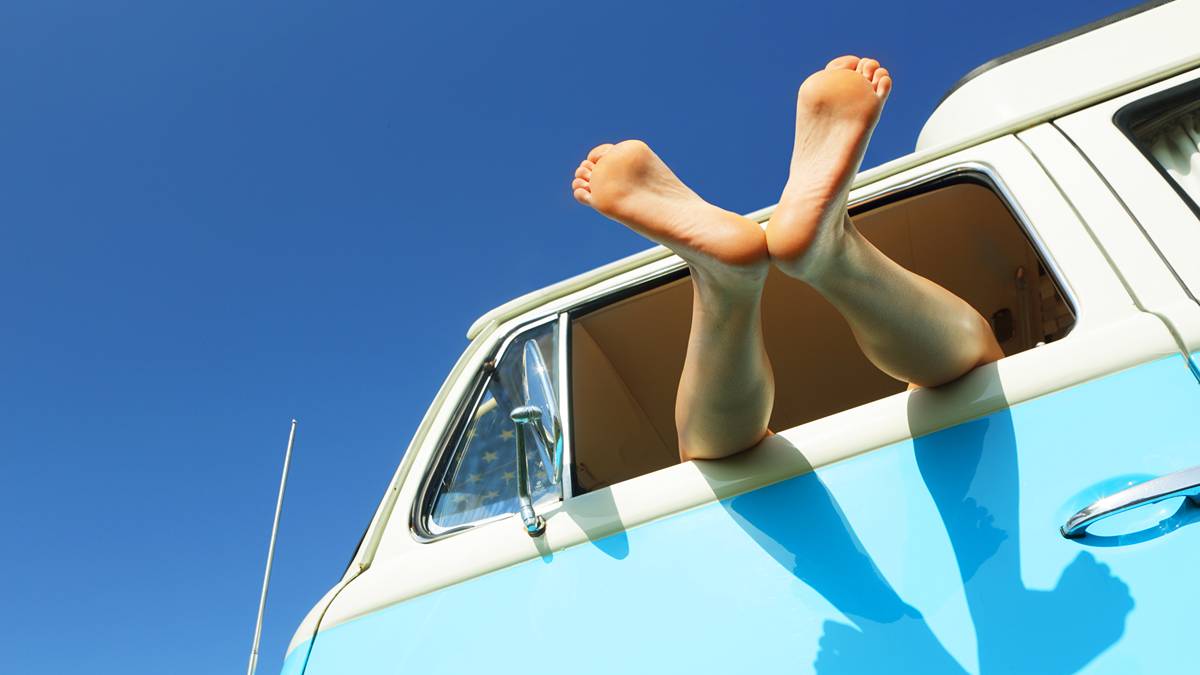
Keen to get out on the road? Here's some of the most iconic spots along one of Australia's most famous road trip destinations. Pic: Getty Images
Few journeys capture the magic of Australia’s coastline quite like the Great Ocean Road.
Words by Simone Mitchell for Escape.com.au
Stretching for over 240 kilometres from Torquay to Allansford, this iconic road trip offers jaw-dropping scenery, charming seaside towns, incredible surf breaks and national parks packed with wildlife.
Built by returned servicemen after World War I as a living memorial to their fallen comrades, the Great Ocean Road is officially recognised as the world’s largest war memorial.
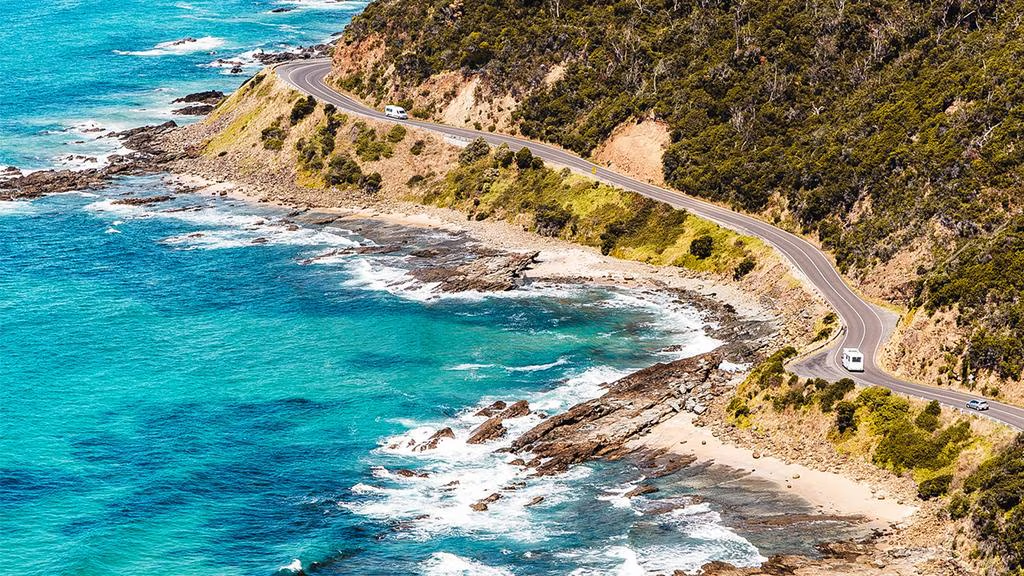
Whether you’ve got more than a day or you’re setting aside a week to explore, this great ocean road trip itinerary is designed to help you make the most of your time on Victoria’s most famous sight-filled route.
From the surf culture of Torquay to the shipwreck coast near Port Campbell, and on to the historic streets of Port Fairy, here’s everything you need to plan a jam packed adventure.
How long do you need for a Great Ocean Road trip?
While it’s technically possible to drive the Great Ocean Road in one long day trip, not everyone will find that enjoyable. To really soak in the atmosphere and take advantage of the many walking trails, scenic lookouts and gorgeous spots to swim or linger, you’ll want to spread it out over at least three days.
Ideally, allow four to five days if you can, which gives time for whale watching, exploring the Otway National Park and discovering some of the smaller seaside towns off the main route.
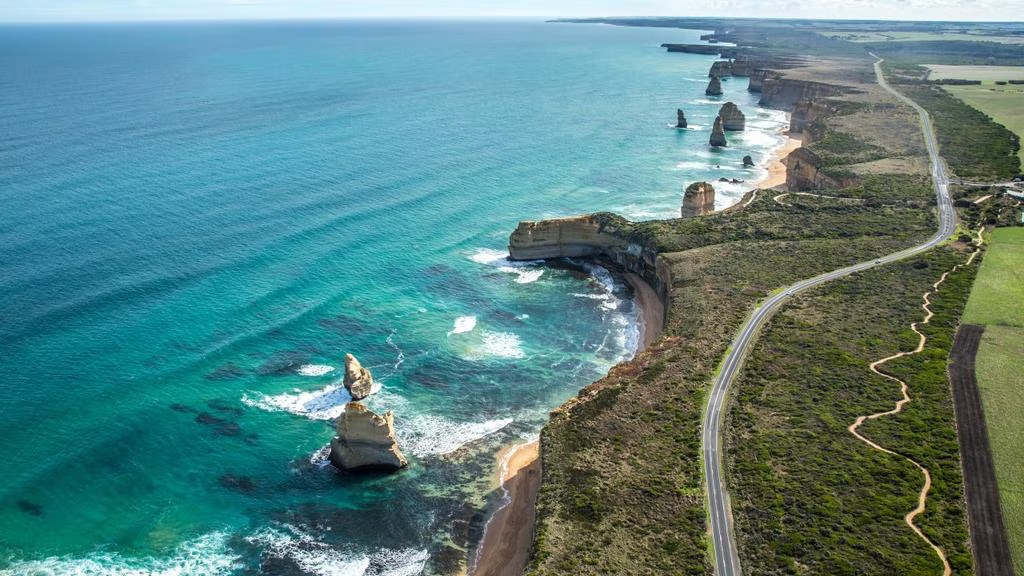
Starting point: Torquay and the surf coast
Driving time from Melbourne to Torquay: 1 hour 20 minutes
** Note, if you are coming from Sydney, your best bet is to fly into Avalon Airport, which is about a 20-minute drive from Geelong. Car hire is available directly from Avalon Airport.
Nearby Geelong is also a great place to spend a night before you embark on your road trip journey. (From someone who grew up in Geelong I recommend you spend the night at the R Suites and eat at Baah Lah or Tulip).
The official beginning of the Great Ocean Road is Torquay, a small town that proudly calls itself the surfing capital of Australia. This is where you’ll find Surf City Plaza, home to big-name surf brands like Rip Curl and Quiksilver, both of which were born here.
If you’ve forgotten any gear, you can pick up wetsuits, boards and other surfy merch before hitting the beach.
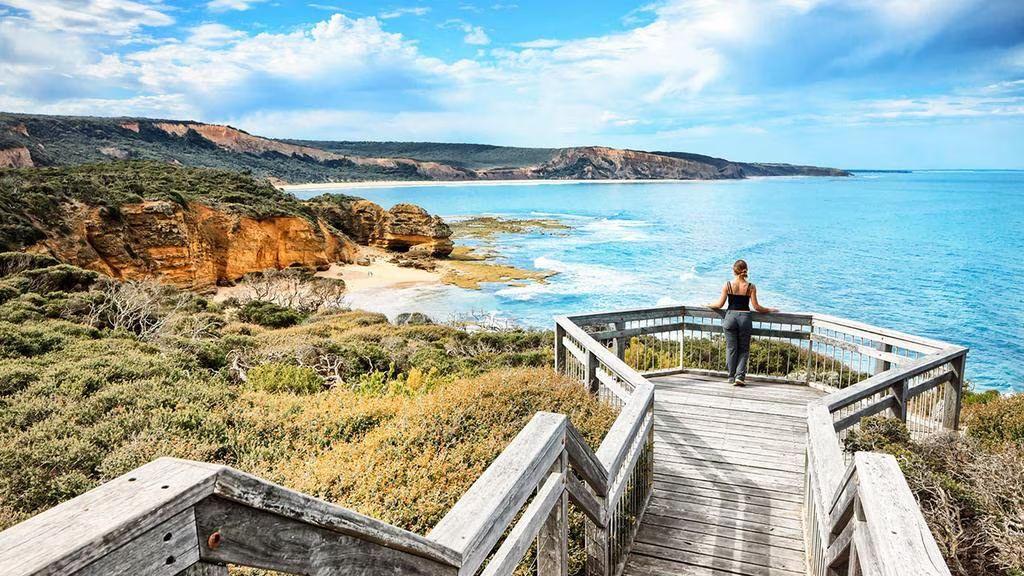
A must-see here is Bells Beach, one of the most famous beaches in the country and the site of the Rip Curl Pro, the world’s longest-running surfing competition.
Head to the car park above the beach and you’ll likely see local surfers carving it up on the limestone cliffs-backed waves. Even if you don’t surf, the viewing platforms here give you spectacular vistas over the ocean.
Grab a coffee along George Street, where you’ll find a string of laid-back cafes. For lunch, one of the best spots in town is Mortadeli.
If you want a little treat, stop in for a soak at About Time Bathhouse.
Or for something kid-friendly, there are playgrounds near the foreshore with free parking nearby.
Stop at the memorial arch for a pic op
Driving time Torquay to Memorial Arch: 30 minutes
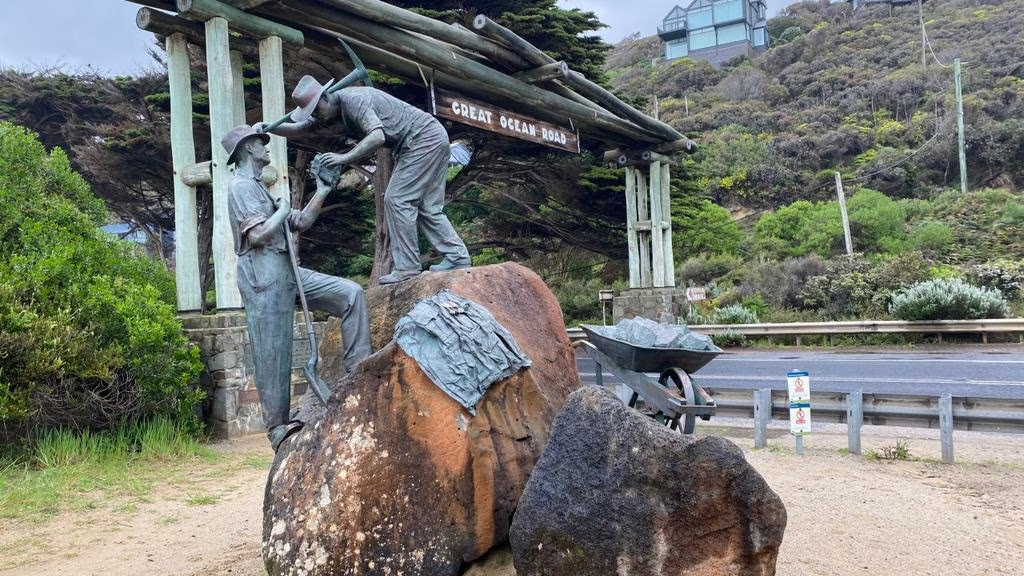
Leaving Torquay and heading south-west, the road hugs the surf coast with cliff-top views and pull-over spots ideal for photos. Soon you’ll reach the Memorial Arch at Eastern View, an important landmark that tells the brief history of how returned soldiers built the road as a tribute to their fallen comrades.
This is one of the most famous stops on the route, so allow time to stretch your legs and take a happy snap and a short walk along the sand (just be very mindful of cars coming along the road when you’re taking pics).
Anglesea and Aireys Inlet
Driving time Memorial Arch to Anglesea: 15 minutes
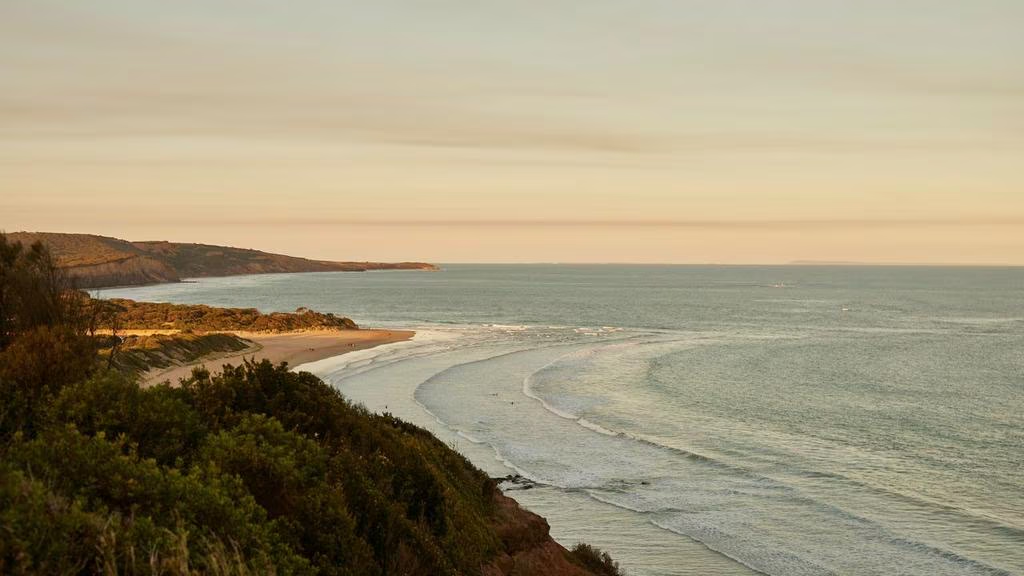
Anglesea is a small town popular with families thanks to its calm river, safe swimming beaches (along as you swim between the flags!) and a golf course where kangaroos often graze.
While you are in Anglesea you can take a canoe tour or hire a bike for a bush trail ride.
You can also head inland for a longer walk along the Anglesea Heath walking trail, which blooms with wildflowers in spring.
A further 10 minutes along the Great Ocean Road is Aireys Inlet, home to the Split Point Lighthouse, instantly recognisable to Australians who grew up watching the TV show Round the Twist. You can climb the lighthouse for a small entry ticket fee and be rewarded with 360-degree views of the coast and the towering eucalyptus trees inland.
Sunnymead Hotel is some fresh new accommodation to book if you want to rest your head here, and you can swing by the Great Ocean Road Gin Distillery for a (responsible) tasting.
Lorne: seaside charm and Teddy’s Lookout
Driving time Aireys Inlet to Lorne: 25 minutes
One of the main towns on the Great Ocean Road, Lorne is a favourite with Melburnians looking for a weekend escape.
It has a long beach for swimming, boutique shops along Mountjoy Parade and plenty of restaurants serving everything from woodfired pizza to fresh seafood (Totti’s in the Lorne Hotel and Greek restaurant Ipsos are standouts).
This is a great place to break up the journey as there are plenty of great places to eat. Spend the night at the accommodation at the Lorne Hotel, which is excellent value and just a stone’s throw from all the action in the main street).
One of my personal favourite places to visit is a bit of a local’s secret. The Lorne Aquatic and Angling Club is right on the water down near the pier, and is one of the most laid-back friendly places I’ve encountered. The view is outstanding and the beers are some of the cheapest you’ll find in the country. It’s a national treasure.
Don’t miss Teddy’s Lookout, a five minute walk from the car park at the top of George Street extension, where you’ll be rewarded with one of the most scenic lookouts on the entire route. The sweeping views of the St George River meeting the ocean are simply breathtaking. (A walk along the St George River is also a great, gentle bush walk if you have the time).
For kids, there’s an excellent playground on the foreshore and plenty of space to picnic.
Waterfalls of the Otway Ranges
Driving time Lorne to Erskine Falls: 15 minutes inland
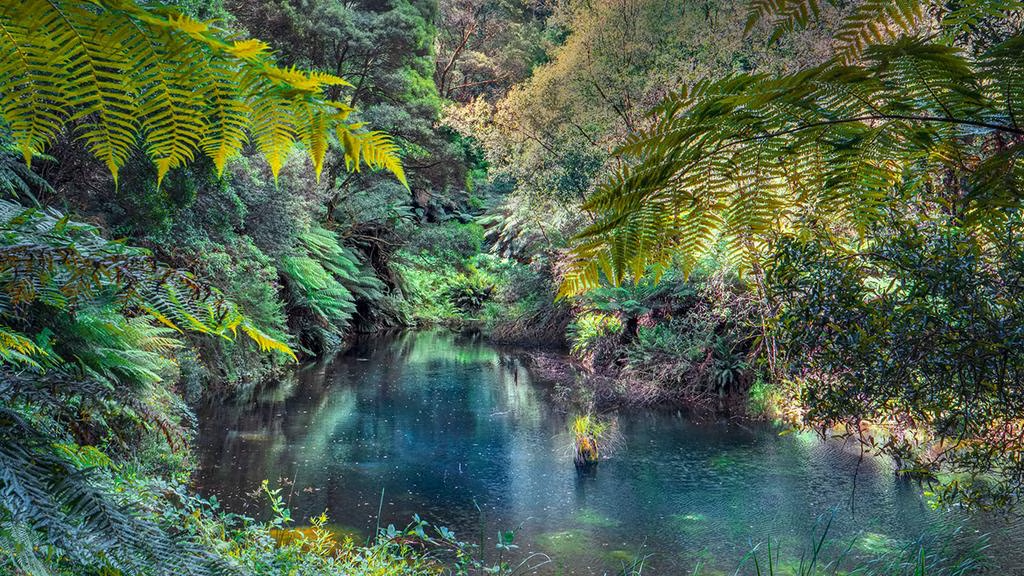
Leave early to explore the impressive waterfalls tucked into the Otway Ranges. From Lorne, you can take a short drive inland to Erskine Falls, a gorgeous spot reached via a five minute walk down to the base.
Other options include Hopetoun Falls, Triplet Falls and the magical Redwood Forest, which feels like stepping into another world. Many of these spots are free to visit, though you’ll need sturdy shoes for the longer walks.
Apollo Bay: Gateway to the Otways
Driving time Lorne to Apollo Bay: 1 hour 15 minutes
From Lorne, the road winds along sheer cliffs and through towering eucalyptus trees until you reach Apollo Bay, another of the main seaside towns.
Known as the gateway to the Great Otway National Park, this town is ideal for booking accommodation if you want to spend extra time hiking or exploring.
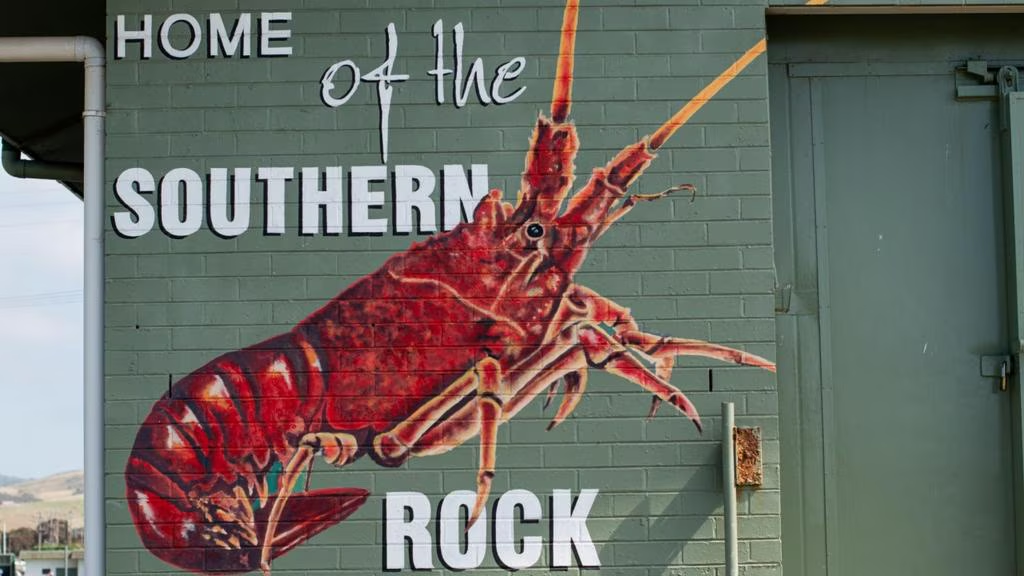
Stroll along the foreshore, check out the local pub for lunch, or grab fish and chips and eat them by the beach.
Families will appreciate the calm swimming beach, while food lovers should stop at the Apollo Bay Distillery or one of the town’s seafood restaurants.
Cape Otway and the national park
Driving time Apollo Bay to Cape Otway: 45 minutes
Heading inland, you’ll find the Cape Otway Lightstation, Australia’s oldest surviving lighthouse, which tells a fascinating brief history of shipwrecks along this treacherous stretch of coastline.
Keep your eyes peeled for koalas in the eucalyptus trees along the way.
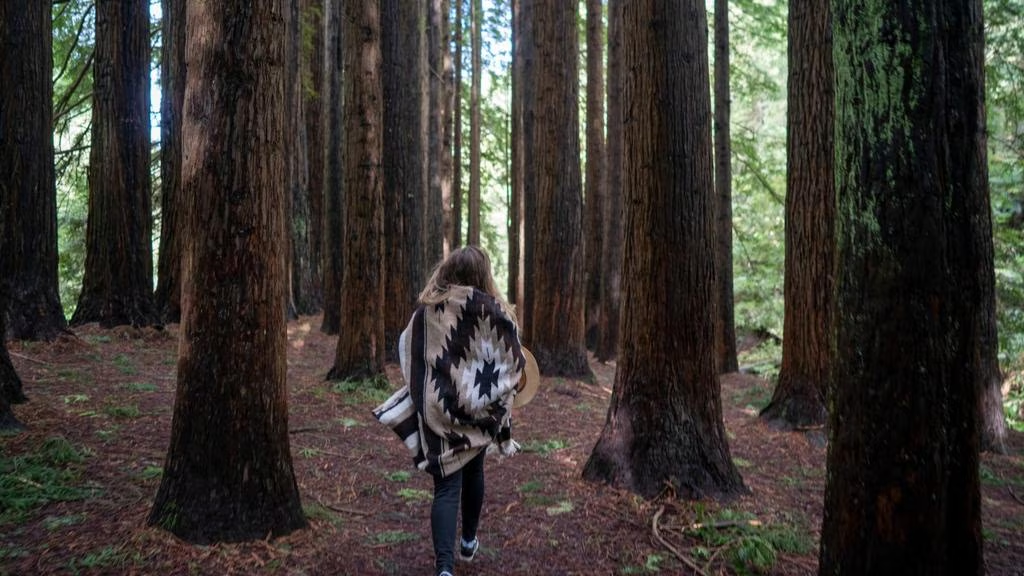
The Great Otway National Park is packed with walking trails, ranging from short walks to longer hikes through rainforest, past waterfalls and along rugged headlands.
Triplet Falls and Maits Rest Rainforest Walk are highlights that shouldn’t be missed.
The shipwreck coast and Port Campbell National Park
Driving time Cape Otway to Twelve Apostles: 1 hour 15 minutes
Once you leave the forest behind, the landscape changes dramatically as you enter the shipwreck coast. Here the road skirts limestone cliffs and opens up to some of the most famous sights in Australia.

First up is the Twelve Apostles, the most famous sight along the entire Great Ocean Road. Park at the large car park and walk to the viewing platform for a jaw-dropping view of the towering limestone stacks rising from the ocean.
For an extra cost, you can book a helicopter flight for a bird’s-eye perspective.
A two minute walk away are the Gibson Steps, where a longer walk down a steep staircase takes you onto Gibson Beach, putting you right at the base of the cliffs.
It’s a gorgeous spot, but note that conditions can be rough and it’s not recommended for swimming.
A few minutes further along is Loch Ard Gorge, named after the famous shipwreck. Here you’ll find multiple short walks leading to blowholes, caves and hidden beaches.
This area is jam packed with scenic lookouts, so allow a fair bit of time to explore.

Port Campbell: stay overnight and refuel
Driving time Twelve Apostles to Port Campbell: 10 minutes
The small town of Port Campbell makes the perfect overnight stop after a big day of sightseeing. It has a handful of great pubs and restaurants, and plenty of accommodation options from motels to Airbnbs.
Beyond Port Campbell: London Bridge and the Grotto
Driving time Port Campbell to London Bridge: 15 minutes
A short drive west brings you to more famous stops: London Bridge, an impressive rock formation that partially collapsed in 1990, and the Grotto, a unique sinkhole filled with seawater that makes for stunning photos. These are quick visits with short walks from the parking lot.
Warrnambool and whale watching
Driving time Port Campbell to Warrnambool: 50 minutes
Warrnambool is the largest city along the Great Ocean Road and a great place to head north if you’re ready to take the inland route back to Melbourne.
But if you’re continuing west, it’s worth staying overnight here, especially between June and September when you can see southern right whales calving in Logans Beach. There’s a purpose-built viewing platform that’s free to access.

Flagstaff Hill Maritime Village brings the history of the shipwreck coast to life. There are also beautiful beaches, playgrounds and walking trails.
Port Fairy: a gorgeous spot to end your road trip
Driving time Warrnambool to Port Fairy: 30 minutes
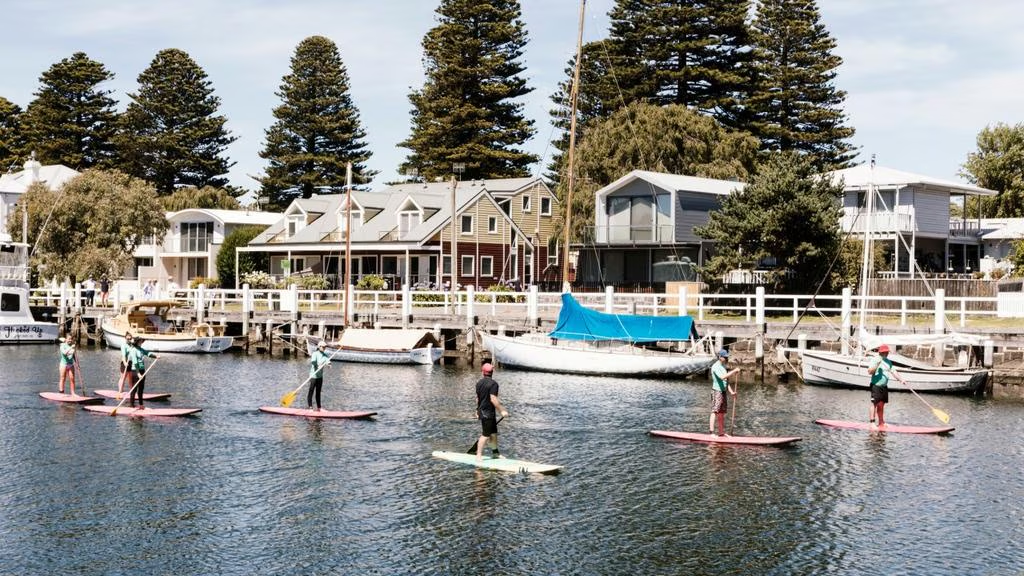
Your final stop is Port Fairy, a historic fishing town that feels like it’s been lifted from a postcard. Stroll along the Moyne River, explore the boutiques and galleries, or enjoy fresh seafood at one of the excellent restaurants.
My personal recommendation is the Merrijig Inn – which has accommodation and one of Victoria’s best restaurants.
For those fancy driving further, you can continue across the border into South Australia, or drive inland back to Melbourne using Google Maps to plot the most direct route.
And pro tip? If you are going back through Geelong, go via Freshwater Creek Bakery and pick up this incredible cake on the way through.
Tips for planning your Great Ocean Road trip
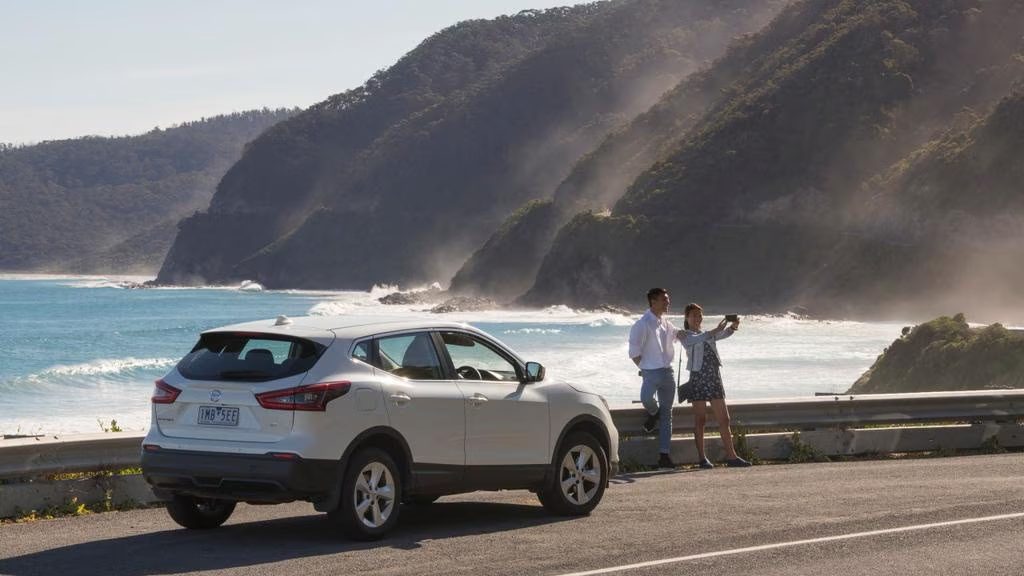
Rental car: A self drive trip is the best way to explore at your own pace. Choose a comfortable car, especially if you’re travelling with kids.
And be mindful when you’re taking the drive – a lot of international visitors drive this route, and sometimes they get confused about which side of the road they should be driving on. Keep your wits about you.
Stay overnight: Don’t try to do the entire time in one day. Booking accommodation ahead is essential in peak holiday periods.
Leave early: Many famous stops get crowded, so aim to arrive at places like the Twelve Apostles before 10am.
Reusable water bottle: Carry one, as some of the national park walking trails don’t have facilities.
Extra cost activities: Some attractions such as lighthouse climbs or helicopter flights require an entry ticket or fee.
Drive inland when needed: If the weather turns, the inland route offers a faster return to Melbourne.
Why the Great Ocean Road is the ultimate iconic road trip
The Great Ocean Road is more than just a scenic route. It’s a moving memorial, a journey through seaside towns, and a showcase of Australia’s most beautiful beaches and natural wonders.
From limestone cliffs and rock formations to impressive waterfalls and towering eucalyptus trees, every bend reveals a new surprise.
Whether you’re a surfer chasing waves at Bells Beach, a family seeking kid-friendly stops, or a couple on a romantic getaway, this iconic road trip has something for everyone.
This article originally appeared on Escape.com.au as The ultimate Great Ocean Road trip itinerary.
Related Topics
UNLOCK INSIGHTS
Discover the untold stories of emerging ASX stocks.
Daily news and expert analysis, it's free to subscribe.
By proceeding, you confirm you understand that we handle personal information in accordance with our Privacy Policy.








